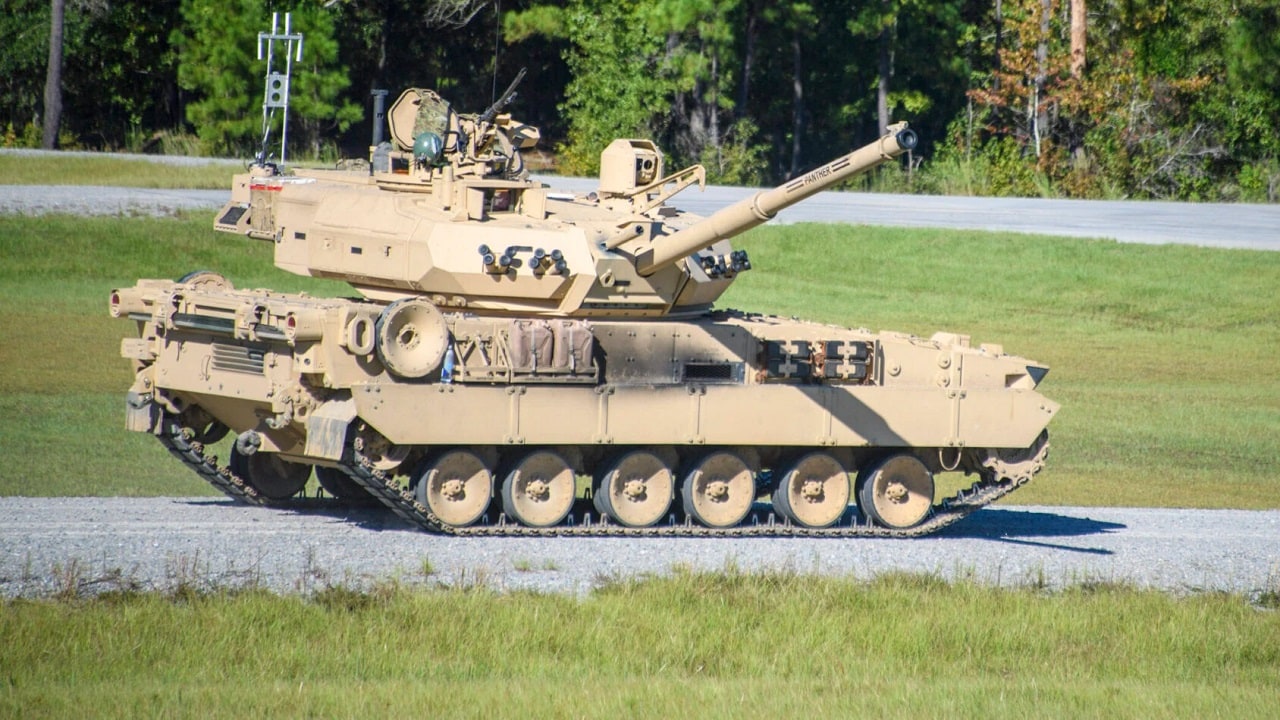The M10 Booker is officially a dead end. With the Cancelation of the project, the US is down a light tank and needs a replacement. However, the US has already received or is in the process of receiving 80 units of the terminated “light tank.”
The question arises: what should the US Army do with these new models?
Stuck with a combat vehicle that the troops don’t need; the Army has several options on what to do with this troubling tank.
M10 Booker: How Did We Get Here?
The M10 Booker, developed by General Dynamics Land System, was intended to provide direct fire support to infantry brigade combat teams (IBCTs). For all the controversies its caused, the Booker is actually a relatively decent vehicle. It features a 105mm M35 tank gun, a 12.7mm M2HB heavy machine gun, and a 7.62mm M240B machine gun. The vehicle is powered by an 800 hp diesel engine, allowing it to reach speeds of up to 40 mph (64 km/h) and offering a range of 250-350 miles (400-560 km) on a single tank of fuel.
Despite its specs, the Booker simply was not what the Army needed. Some argue that its weight, which is comparable to some main battle tanks, undermines its usefulness to the troops. In the end, the program was canceled due to cost overruns, maintenance issues, and design concerns. Unfortunately for the Army, the initial contract for the Booker required the Army to purchase an initial batch of 80 units, most of which have already been delivered. Now the Army is stuck with a tank that no one needs and is unsure what to do with its fleet of Bookers.
What to do with the Booker?
One straightforward approach is to integrate the M10 Bookers into existing armored units. Despite all its issues, the M10 still possesses many features that could be useful on the battlefield. These vehicles could be used to bolster the firepower and protection of units that currently operate lighter vehicles, such as the M2 Bradley Infantry Fighting Vehicle. This integration could enhance the overall combat effectiveness of these units, providing them with additional direct fire support capabilities.
The M10 Bookers can be repurposed for training purposes. Armored units and infantry brigades could use these vehicles in training exercises to simulate enemy armored threats or to practice combined arms operations. This would allow soldiers to gain experience in operating and countering armored vehicles, improving their readiness for real-world combat scenarios. Additionally, the vehicles could be used in simulation centers to provide realistic training environments for soldiers.
Another option is to use the M10 Bookers for research and development purposes. The Army could leverage these vehicles to test new technologies, such as advanced armor materials, weapon systems, or autonomous capabilities. By using the M10 Bookers as test platforms, the Army can gather valuable data and insights that could inform the development of future combat vehicles. This approach would ensure that the investment in the M10 Booker were not a complete waste and contributed to the advancement of military technology.
Some have suggested that the US could possibly sell the remaining M10s to foreign allies. Many countries are looking to modernize their armored forces, and the M10 Booker could be an attractive option for nations that need a versatile and powerful armored vehicle. This would not only recoup some of the costs associated with the program but also strengthen military ties with allied nations.
Reassigning or Repurposing the Booker
Another possibility is that the Army could hand over the Bookers to National Guard Units around the country. The M10 could be deployed in static defense positions to enhance the security of critical infrastructure or military installations. While they would probably never see any real combat, putting them to use in the National Guard would likely be preferable to scraping them out right. This approach would utilize the vehicles’ capabilities without requiring them to be highly mobile, addressing one of the primary issues that led to the program’s cancellation.
One interesting approach is to convert the M10 Bookers into support vehicles for engineering or logistics units. By modifying the vehicles to carry specialized equipment, such as bridge-laying apparatus or supply transport modules, the Army can repurpose them to support various operational needs. This conversion would extend the utility of the M10 Bookers beyond their original combat role.
Putting the M10 to Rest
If the US can’t find any other use for the M10, then the final option is to simply put them away. Some of the M10 Bookers could be donated to museums or sold to private collectors. With this approach, the Booker could at least be repurposed for educational purposes and show up at military exhibitions every once in a while.
If none of that works, then the final models could simply be mothballed and put away indefinitely until they’re used for scrap metal.
About the Author:
Isaac Seitz, a 19FortyFive Defense Columnist, graduated from Patrick Henry College’s Strategic Intelligence and National Security program. He has also studied Russian at Middlebury Language Schools and has worked as an intelligence Analyst in the private sector.

